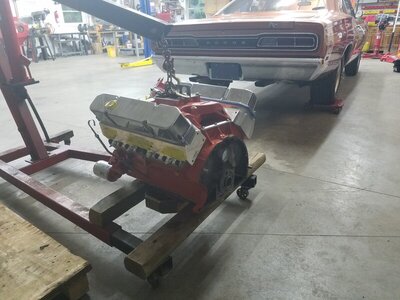Nate S
Well-Known Member
His plan is to replace the .080 head gasket with a .110 to get to 9.65:1 cr. Does everybody agree that should be enough to take care of the problem?
And another option I guess would be to pay him extra to replace the pistons to get a quench, or would that also mean a cam change? Is a quench really that important for what I am doing with the car and worth the extra cost since it is already put together and making good power without one? Or would this be another debate similar to running ported vs manifold vs no vacuum advance?
9.65 with that cam will be fine. Probably need pump 93. Ask about intake spacing while you’re talking. It might not line up very well without some shims.
As for quench. It’s basically equal to another 1/3 of a point of compression, maybe 1/2. Where you are that’s about 10 horsepower. I wouldn’t lose sleep over it. Good analogy to the ported / manifold vacuum. Either will work and some people get pretty opinionated about it.


















